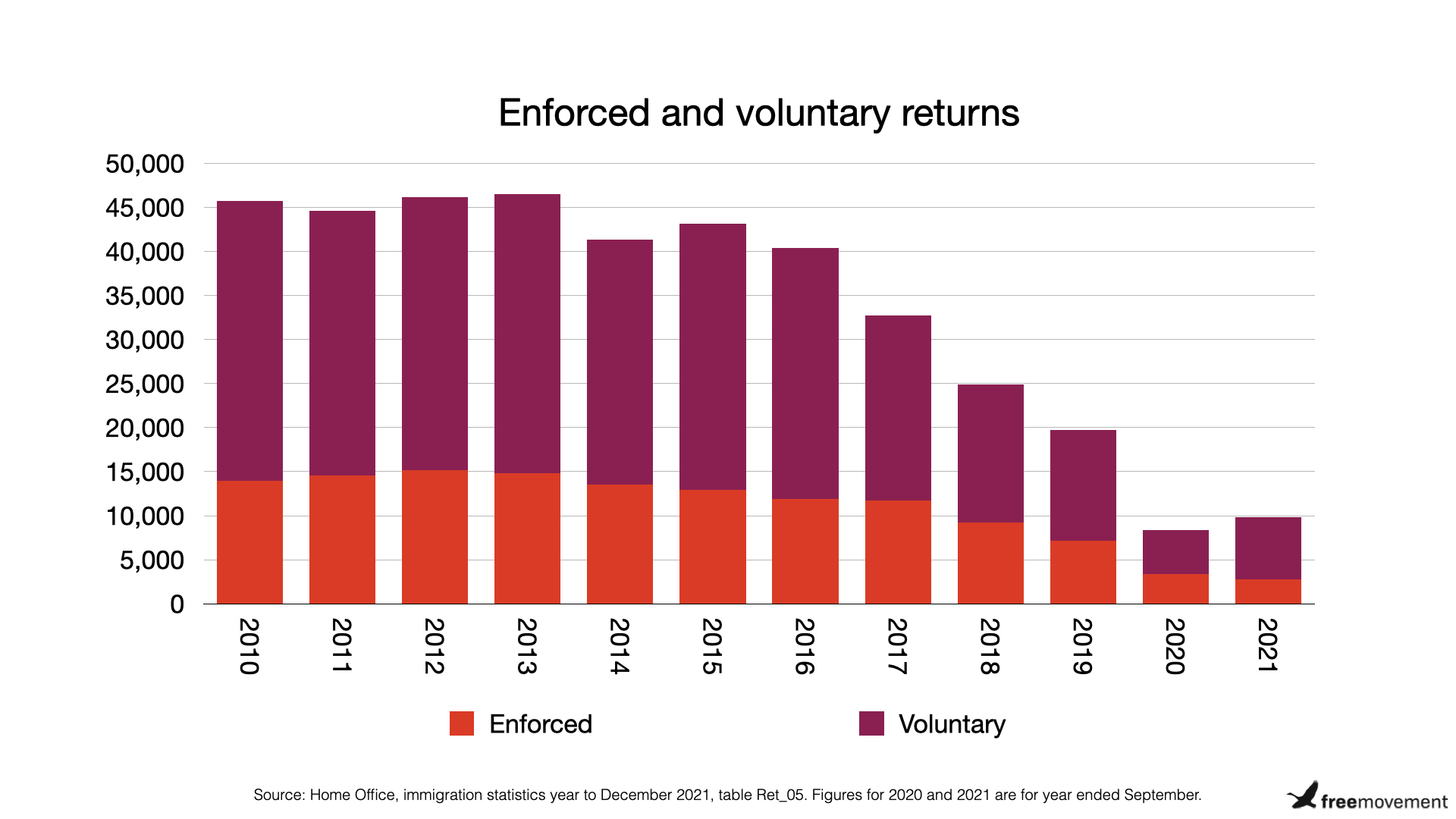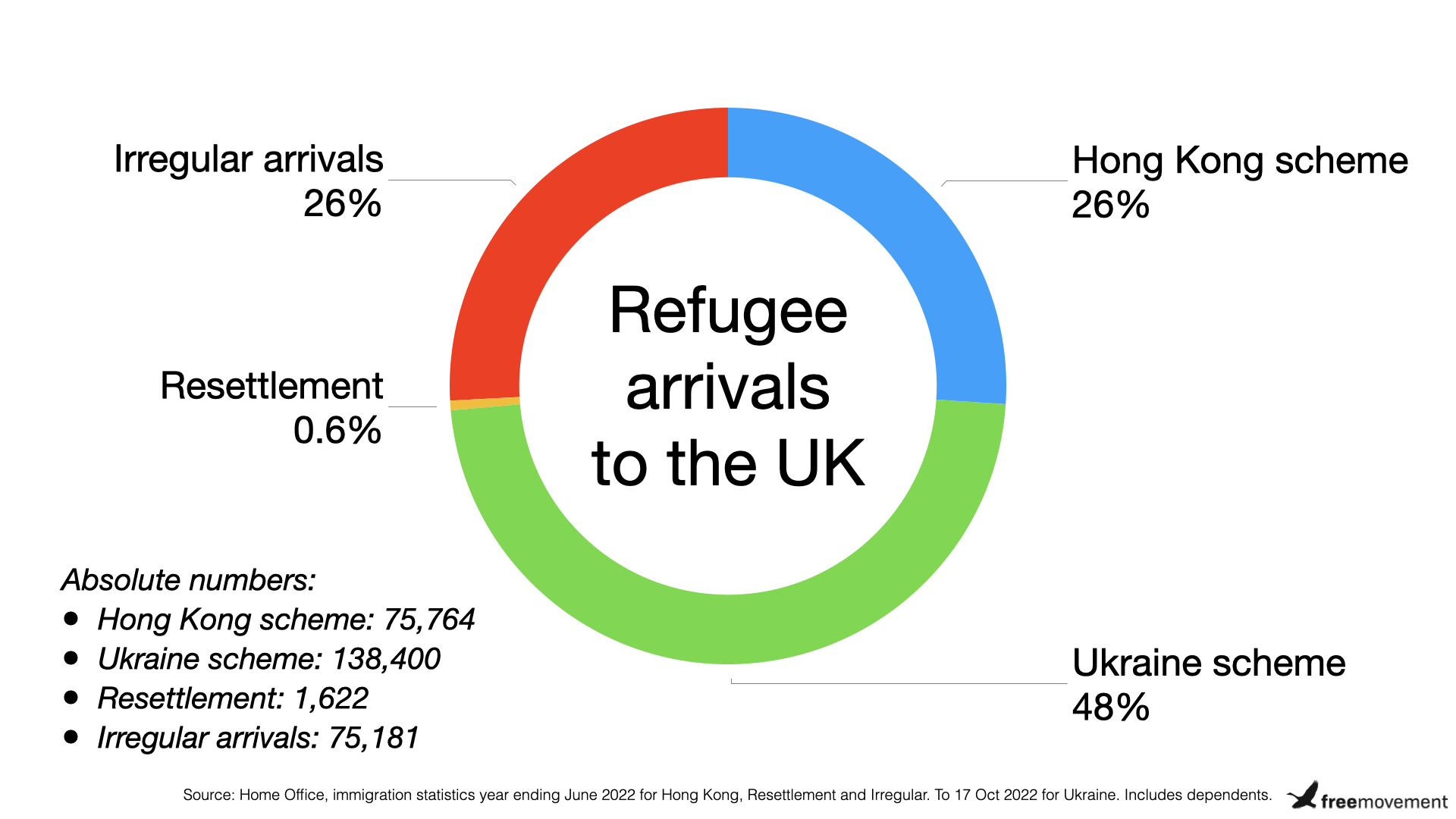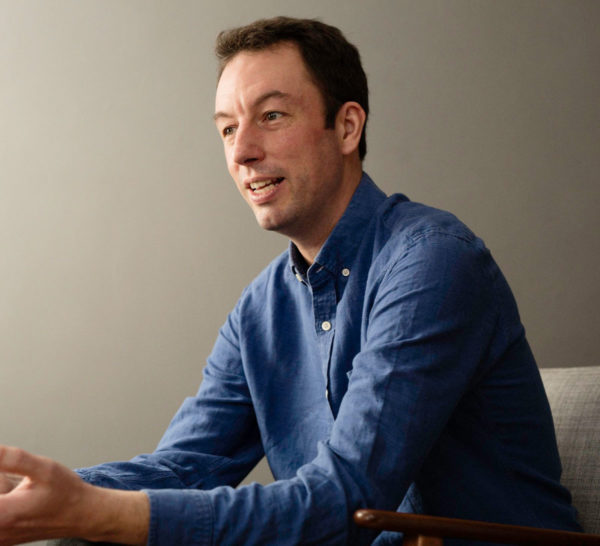- BY Colin Yeo

Putting small boat crossings in perspective
Small boat crossings attract a lot of media and political attention. The images we see of refugees arriving on our shores clearly upset some people. The Conservative Member of Parliament for Dover and Deal in successive tweets, for example, says crossings are “no refugee crisis… but simply illegal immigration” and then that she is “deeply shocked” by a firebomb attack on the Manston camp of the same refugees she herself demonises.
My article in the @MailOnline today calling for an end to the small boats crisis.
— Natalie Elphicke MP (@NatalieElphicke) October 30, 2022
“Our border is our front door. No one has the right to walk in uninvited. That is why we have border controls – and why strong border security is vital.”https://t.co/6n7v9g7aAk
I am deeply shocked by the incident in Dover today. I have spoken to the immigration minister about the situation. My thoughts are with everyone involved.
— Natalie Elphicke MP (@NatalieElphicke) October 30, 2022
The arrival statistics quoted almost daily seem alarming. The crossing is a dangerous one, although the number of deaths has been mercifully low so far, due to the amazing search and rescue work done by Home Office officials, the navy and the Royal National Lifeboat Institution.
David Cameron warned of refugee camps on English shores if Brexit went ahead. He has been proved right. The UK waltzed out of the Dublin return agreement with the EU, the asylum backlog has soared and refugees are being concentrated in overcrowded and insanitary detention camps, leading to outbreaks of diphtheria and scabies. As a recent briefing by the Institute for Public Policy Research puts it, the growth in small boat crossings — from a base of zero prior to 2018, it should be recalled — is likely due to “a combination of increased securitisation among other routes, the UK’s withdrawal from the Dublin Regulation, and a ‘snowball effect’”.
It is important to put things in perspective. No-one anywhere thinks that refugees arriving in small boats is a good idea. Everyone agrees that the crossings should be stopped. There are three very different types of response that have been suggested. None of the available policy responses is capable of eliminating small boat crossings; now that they are an established route, they are likely to persist.
Punish and deter
The first response, which is heavily promoted by the government, is to punish those refugees who do arrive in small boats in order to deter others from trying the same thing. By sending some of them to Rwanda, it is hoped that others will decide not to attempt the crossing.
Those of this persuasion also think that denying them the right to work, allowing them only destitution-level support, concentrating them in detention camps, and keeping them waiting for literally years for a decision (which is a grant of asylum in 75% of cases) also somehow act as a deterrent to others. When it is pointed out that there is zero evidence to suggest the policy works, they retort that numbers would probably be even higher were it not for this cruelty.
Safe and legal routes
The second response, which is heavily promoted by campaigners, is to provide safe and legal routes across the Channel so that there is no need for anyone to get in a small boat in the first place. Removing the barriers to entry would remove the demand for small boat crossings and put the smugglers out of business. And, after all, almost all those crossing the Channel in small boats are genuine refugees; how do they differ from those entering on existing safe and legal routes? IPPR calculate that 70% would get asylum, and I think this is before appeal outcomes are taken into account.
On these terms, this policy would surely achieve its aim. But, depending on how the policy were implemented, it could also be tantamount to abolishing the border with France. No British government is ever going to agree to that. If it were a capped scheme and/or involved processing of asylum applications in France, it might attract more refugees into France from within the Schengen border-free area than was previously the case. The French government might not be very happy about that. Those who were refused entry, because of the cap or because they did not qualify for asylum, might still resort to small boat crossings.
This is not the straightforward solution that is sometimes suggested. On the face of it, in this political climate, it seems profoundly unrealistic. But I’ll return to that in a moment.
Deal with France
The third response would be to return those who enter in small boats to France. The UK used to have a returns deal with the rest of the EU called the Dublin system. I put together a full briefing on that. To cut a long story short, in its final years there were actually more refugees entering the UK under the Dublin system than being removed. This is surprising given the way in which the Dublin system is designed and the high numbers of removals other comparable countries were carrying out under its auspices. The low number of removals was probably a problem with the Home Office, not with the Dublin system. So, one option might be to rejoin the Dublin system, which is not exclusive to EU countries and includes considerable safeguard mechanisms.
Otherwise, it might be possible to negotiate a bilateral arrangement with the French. I’m simply not qualified to assess how likely that might be. But it seems less likely if the UK government pushes ahead with unilateral breaches of the withdrawal agreement with the EU over the Northern Ireland protocol.
It is possible that a high risk of return to France might deter crossings. There is no evidence base but it seems more plausible and less outlandish than removing a small number of refugees to Rwanda with literally no legal safeguards in place at all. The deterrent effect might perhaps be increased if the returns take place quickly and in quantity. That would be hard to accomplish in a way that is compatible with international law obligations, but it is not necessarily impossible.
Personally, I seriously doubt that the dysfunctional Home Office is, as things stand, capable of this. Enforced removals are violent, expensive and hard to do, and they are currently at an all time low (see chart). The ‘Third Country Unit’ that used to run Dublin removals was dysfunctional even by Home Office standards. There are serious legal and practical obstacles but, on the face of it, this seems like a more plausible public policy response.

Small boats are small fry, relatively
But let’s not so readily dismiss the idea of safe and legal routes. The main criticism that is levelled against this approach is that it would allow too many people to enter with inadequate safeguards. But the number of people arriving by small boat or lorry in the UK is dwarfed by arrivals in other European countries. The numbers are even dwarfed by the other ways that people arrive in the UK by other means to receive sanctuary.
In the last year, the twelve months to June 2022, there were here in the UK 63,089 asylum applications relating to 75,181 people (stats here). That sounds like a lot. But let’s consider it in context alongside other countries and the other sanctuary routes available in the UK: the Hong Kong scheme, the Ukraine scheme and the general resettlement scheme, occluding for Afghans.
First let’s think about international comparisons. UNHCR estimate there are 21.3 million refugees in the world at the moment, plus 4.6 million asylum seekers. Turkey alone hosts 3.8 million refugees, Colombia 1.8 million and Pakistan 1.4 million. 1.4 million new asylum claims were made in the world, of which the UK received one half of one per cent (0.5%). Just within Europe, Germany received 148,175 applications in 2021. France received 103,790.
Focussing just on the UK itself, a total of 75,764 visas were issued in the last twelve months under the Hong Kong scheme for British Nationals (Overseas) who wish to relocate to the UK, and then some additional visas were granted to those who had already reached the UK by other routes as well. In all, 133,124 visas have been issued since the route opened in January 2021 (stats here).
In the last nine months alone, almost double that number of people entered the UK under the Ukrainian scheme, around 140,000 people (latest stats here).
The number entering under the much-vaunted safe and legal routes for refugees from the rest of the world is tiny in comparison. There were 1,622 people granted protection through the established resettlement schemes in the year ending June 2022, over two thirds (71%) fewer than in 2019 (stats here). The Afghan scheme is barely operating at all and those who were relocated to the UK remain languishing in temporary accommodation over a year on.
It turns out that over the last year, only one quarter (26% to be precise) of refugee arrivals into the UK were by small boats, lorries or other spontaneous means.

Let’s stop pretending we’re too full up or we can’t cope. We take far fewer applications than comparable countries. If we can set up schemes for Hong Kongers and Ukrainians that actually welcome far more people than arrive from the rest of the world combined, why can’t we extend those schemes to others and offer proper safe and legal routes of entry?
SHARE

